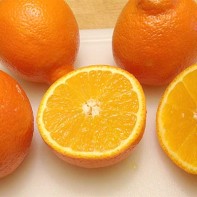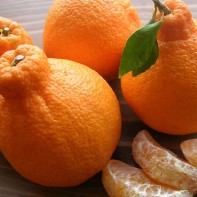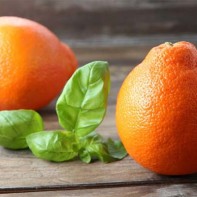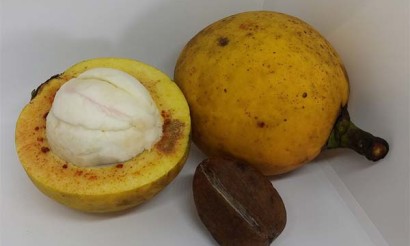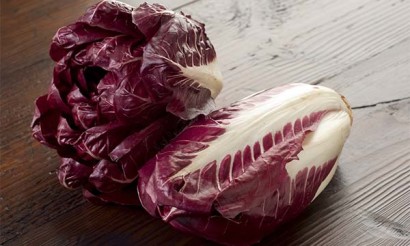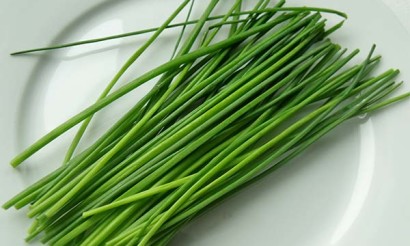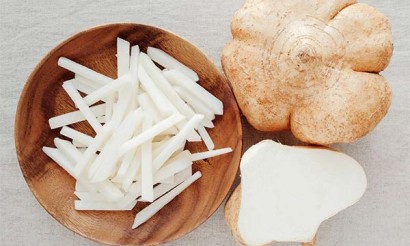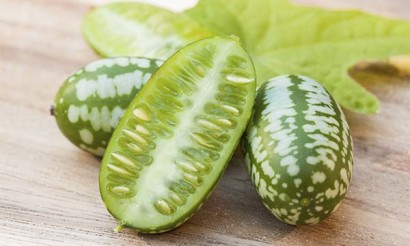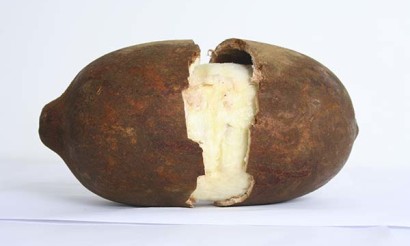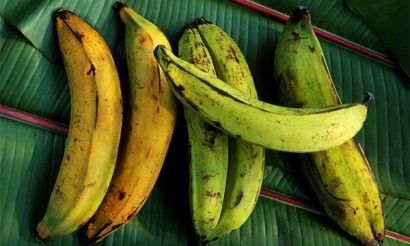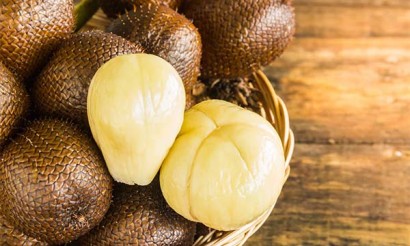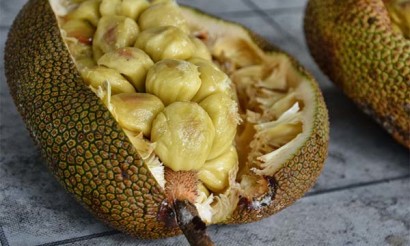Mineola: what is this fruit and why is it useful?
Mineola is a hybrid of Duncan grapefruit and Dancy mandarin. It was first grown in Florida in 1931. Then, after Florida, interest in this fruit appeared in the lowland desert regions of Arizona and California. It was only after 1964 that the minnow began to gain popularity in other parts of the earth as well. Now it is not as common as oranges, tangerines and grapefruit, but thanks to its attractive color, excellent taste and small number of seeds inside the fruit it still has popularity.
- What kind of fruit is it
- What it looks like
- What's the difference between a minneola and an orange
- Where it grows
- What is the usefulness of the minneola fruit
- What harm can it do?
- What is the right way to eat the minceola
- What can be prepared from the minceola
- Traditional Medicine Applications
- Cosmetological application
- How to choose and store the fruit
- How to grow it
What kind of fruit is it?
The Minneola tangelo is a citrus fruit, a hybrid of mandarin and grapefruit, with a reddish-orange peel and orange flesh. In common parlance, the fruit is called "honey bell" because of its bell shape.
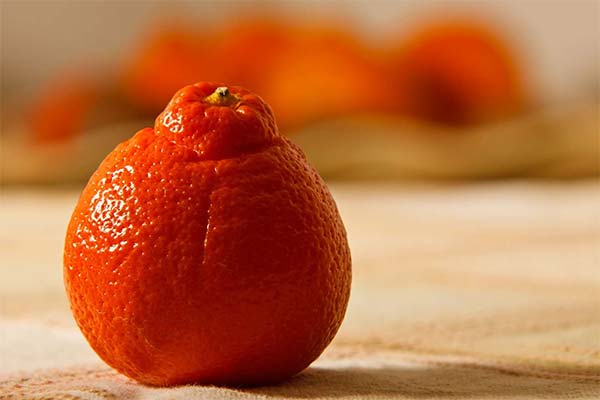
Nutritional value per 100 grams:
- Calories: 70.
- Fats: 1 gr.
- Carbohydrates: 13 g.
- Dietary fiber: 2 g.
- Protein: 1 g.
- Vitamin C: 100% of the daily allowance.
- Folic acid: 80% of the daily allowance.
- Potassium: 6%.
What it looks like
The average size of the fruit is 7 to 9 centimetres in diameter, rounded or flattened in shape and a distinctive, bulging "neck" which gives it a bell-shaped appearance. The rind is thin, shiny, bright red-orange, with a rough, textured surface. The peel is easy to peel, leaving an orange, soft and watery flesh inside. Usually either seedless or with a few cream-colored seeds. Mineola has a sweet-tart taste with a grapefruit sourness, and has a honey aroma.
What is the difference between a minneola and an orange
The main difference between the minneola and the orange is that the former is derived from crossing the fruit of the mandarin and grapefruit. Whereas the orange is a purebred variety of the citrus family.
Oranges tend to taste sour-sweet, while minerals have a sweeter taste.
Where it grows
The tree needs sun and heat to grow. And also this fruit does not tolerate cold winds and frost. That is why the plantations of myneola trees are located in Israel, Turkey, China, and, of course, in its homeland - the United States.
What is the usefulness of the myneola fruit
Tangelo fruit is very healthy and has many benefits.
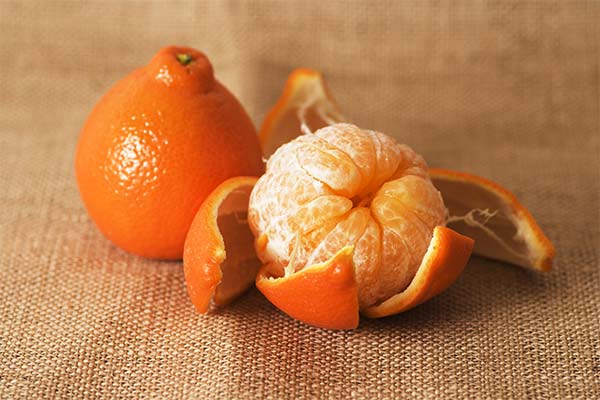
- First, mineola is low in calories and contains many important minerals and vitamins. Being low in calories, this fruit helps satisfy hunger without adding many calories. This fruit is rich in dietary fiber for quick digestion. Tangelo can also burn fat cells and reduce excess fat deposited around the waist.
- Secondly, minola contains calcium, which strengthens bones and teeth.
- The fruit contains natural antioxidants that protect the body from many types of infections. You can use this fruit to strengthen your immune system. Minerals contain a lot of vitamin C, so much so that one fruit contains about 100% of this vitamin. Vitamin C is a natural antioxidant that helps stimulate white blood cell production in the body and supports the immune system against foreign pathogens and potential infections. Minneola also helps prevent a number of allergies, colds, coughs and even deadly cancer.
- Poor blood circulation in the body can lead to organ damage. Mineola contains a lot of folic acid, iron and vitamin B6, which help improve blood flow by promoting the production of red blood cells in the body. And these, in turn, help oxygenate organs and improve the functioning of the circulatory system.
- Mineola can prevent cancer cells. The fruit has flavonoids, natural antioxidants that reduce free radicals in the body and reduce overall oxidative stress. This, in turn, helps reduce the risk of cancer as oxidative stress leads to cellular mutation. These antioxidants are also important for protecting the body against a host of other chronic diseases, such as arthritis and autoimmune diseases.
- Minneola contains large amounts of calcium and potassium. And these keep bones and teeth strong, which reduces the risk of osteoporosis and bone weakness throughout the body, and also prevents gum disease. Also, the juice of this fruit will be a good preventative against bone-related diseases, such as arthritis, that afflict the elderly.
What harm can come.
Mineola, like any other citrus fruit, can cause certain health complications. Here are the side effects that excessive consumption of this fruit can cause:
- nausea;
- heartburn;
- ulcers;
- stomach irritation;
- tooth sensitivity.
What is the right way to eat the fruit mineola
There are several ways to consume maneola. The first is to simply eat the fruit after peeling it. The second is to add the juice or pulp of the maneola to a prepared dish.
What you can make with minceola
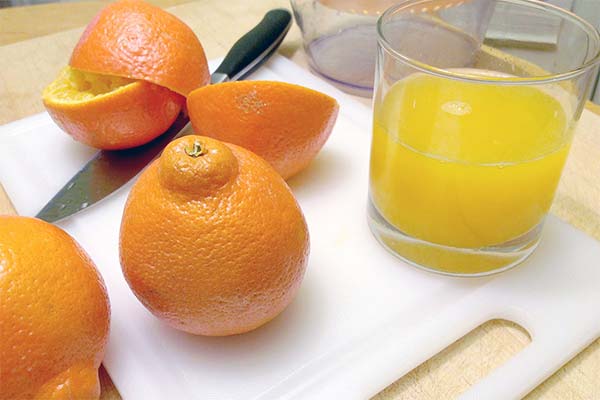
For example, tangelo pulp goes well with salads or salad dressings. You can also add this fruit to a taco, a Mexican dish. Tangelo also goes well with sorbet, cake toppings, or added to a fruit salad. You can add it to a smoothie to make it healthier. Also, mineola, with its bright tart-sweet flavor and plenty of juice, is ideal for making frèches and cocktails.
In general, minceola can be added to any prepared dish where the citrus sourness would be appropriate. The only plus of tangelo is that it has almost no pips, and you don't have to carefully peel them out of each slice.
Traditional medicine applications
- Prevention of kidney stones. Studies show that daily consumption of citrus juice, especially minceola juice, helps get rid of kidney stones. The acidity of this juice can break down such stones and remove them with urine. If you drink a glass of minceola juice for several days, you can notice results very soon.
- Treatment of the gastrointestinal tract. Mineola contains fiber, which helps with constipation by providing smooth digestion and cleansing the bowels. Fiber also helps reduce the risk of heart disease and diabetes.
Minneola is good for the heart because it lowers cholesterol levels. Cholesterol buildup in the body can "block" artery walls and narrow passageways, which can lead to poor blood flow and eventually heart attacks. Therefore, patients with chronic heart disease are advised to eat more minerals.
Cosmetic applications
- This fruit is used to remove pigmented and dark spots on the skin. Mineola contains vitamin C, which is very important for the skin. The dried fruit is used as peels and masks, which, thanks to the vitamin C, help to lighten dark spots on the skin of the face.
- Preventing the appearance of acne. Mineola is also great for treating skin and fighting acne. The fruit will remove all the extra dirt, dust and bacteria that can accumulate on the face due to poor cleansing. The dried peel of the fruit is also used for this purpose. It helps to get rid of harmful toxins and detergents, and it cleanses the facial skin well. The peel fights oily skin, thereby reducing acne.
- Facial skin lightening. Those who have tanned skin and want to make it brighter and more beautiful should regularly use a mask of minerals. This fruit will remove the excess tan and give the face a beautiful look. The skin texture will improve, it will become a few shades lighter than before.
- With the help of minerals prevent the signs of aging. This fruit can also fight anti-aging changes. Signs of aging include dark spots, dullness, acne and wrinkles. In most cases, all of these signs appear due to lack of hydration and nourishment of the skin. Again, cosmetologists use masks in the components that are in the minerals. It helps to smooth wrinkles and deep hydration.
- Getting rid of black dots. A great way to get rid of black dots is to make an exfoliation with this fruit. To do this, beauticians make a paste of the zest of the minerals, then scrub the area of the problem area, and then leave it for another 15 minutes as a mask. The composition penetrates deep under the skin and cleanses clogged pores, as a result of which most black spots disappear.
How Mineola is used in trichology
- The use of conditioners based on minerals. This fruit is often used as an excellent hair conditioner. Since the moisturizing effect of minneola juice extends not only to the skin of the face, but also to the hair. Conditioners moisturize the hair, give it shine and promote growth.
- Prevent and treat dandruff. Juice from the zest of minerals is excellent for removing dandruff or preventing its appearance. Trichologists recommend rubbing the juice of this fruit for a few minutes in the scalp and after that rinse your hair very well with water. Performing such a procedure for several days in a row, you can instantly notice the first result.
- Stimulation of healthy hair growth. Mineola crust also promotes hair growth. The fruit contains vitamin E, which is very important for hair. The fruit will not only prevent hair loss, but also allow the hair to become thicker and longer. This fruit is rich in folic acid, so it helps in strengthening follicles from within, which reduces the risk of thinning hair density.
How to choose and store the fruit
When buying myneola, look for a bright reddish-orange fruit the size of a baseball, or slightly larger, with a small, distinctive bulb protruding from the end of the stem. Choose fruit that is heavy for its size, with soft, pliable skins. Citrus fruits with tough or hard peels are sometimes less juicy or "dry" inside.
Also check that the minnow has no dark spots on the rind and that the fruit smells pleasant. Fresh fruit should keep in your fruit vase for a week to ten days. But for longer storage, the fruit should be kept in the refrigerator (up to three to four weeks). As with all citrus fruits, the fresher the fruit, the sweeter and brighter the flavor, so buy only what you can eat in the next few days.
How to grow myneola
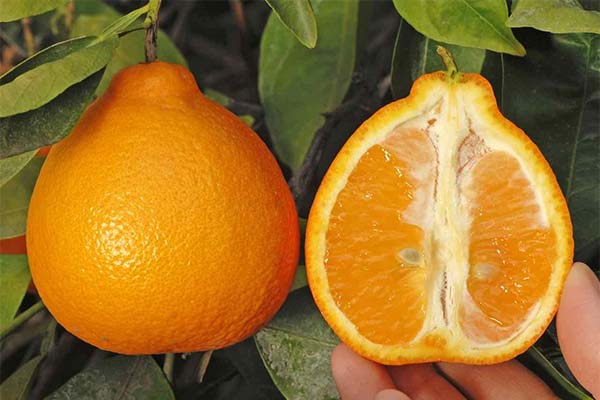
- Remove the largest and strongest seeds from the minerals fruit.
- Then put the seeds in a sieve and rinse under cool water for one to two minutes to wash away any remaining sugar that was in the pulp.
- Put the seeds in a bowl and fill with carbonated water. Leave them in this state for eight hours. This procedure will allow the seeds to sprout faster later on.
- After that, lay them out on a towel and let them dry.
- If you want the seeds to germinate as quickly as possible, you can rub each seed a bit on the sides with sandpaper, this will also speed up germination.
- Now prepare the pots for the seeds. For this, take small pots, about 8 centimeters high and 5 wide. For each seed there should be a separate pot.
- Fill each pot with soil. And then put all the pots in a shallow container of water until the soil is moist. This is important to do because it will soak the soil much better than just pouring water on top of it.
- After the soil has moistened, remove the pots from the water.
- Now make a small hole in the middle of each pot, and put one seed in it.
- After you have put the seeds in the pots, backfill the pits with soil and tamp them down a bit.
- Then cover each pot with cling film and put it in a warm, bright place. But just not in direct sunlight, otherwise it will be too hot for the seeds and they won't germinate.
- Check the soil daily for moisture. Keep the soil moist, but not damp. It may take two to eight weeks for the seeds to germinate. When the seeds germinate and a small stalk appears, remove the foil from the pots.
- When the stems increase in size and have at least three leaves on them, then transplant the stems into larger pots.
«Important: All information on this site is provided for informational purposes only. for informational purposes only. Please consult with your health care professional before using any of the recommendations. specialist before using any of the recommendations. Neither the editors nor the authors shall be liable for any possible harm caused by materials."


